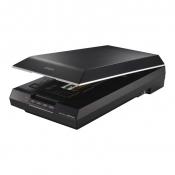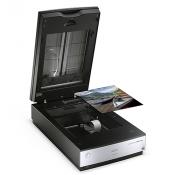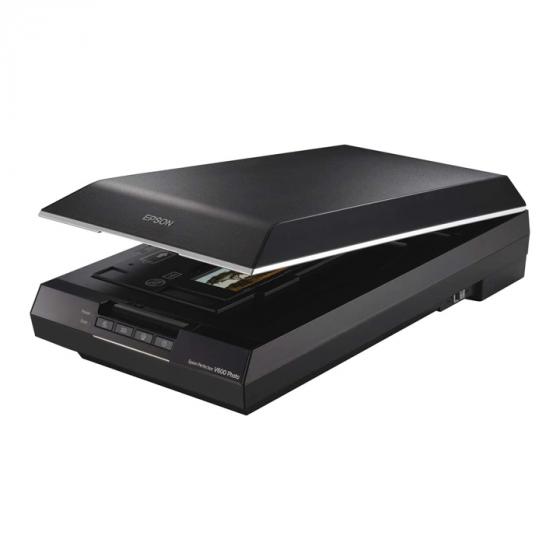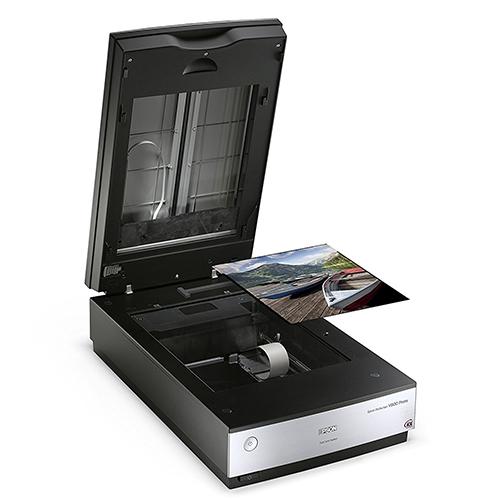Product Comparison: Epson Perfection V600 vs Epson V800
This site is a free online resource that strives to offer helpful content and comparison features to its visitors. Please be advised that the operator of this site accepts advertising compensation from certain companies that appear on the site, and such compensation impacts the location and order in which the companies (and/or their products) are presented, and in some cases may also impact the scoring that is assigned to them. The scoring that appears on this site is determined by the site operator in its sole discretion, and should NOT be relied upon for accuracy purposes. In fact, Company/product listings on this page DO NOT imply endorsement by the site operator. Except as expressly set forth in our Terms of Use, all representations and warranties regarding the information presented on this page are disclaimed. The information which appears on this site is subject to change at any time. More info


- Plus, this Epson also scans paper photographic prints because it's a flatbed.
- I've owned a dozen different flatbed scanners and a couple of film scanners. You might be able to get better results from a more expensive scanner, but for the money this Epson V600 is tough to beat. Highly recommended.
- First, this unit does a superb job of scanning both slides and film, so that part worked out very well. At first, I scanned at 4800 dpi, but after a bit, realized that 3600 dpi was more than enough resolution for most pictures.
- If you want to start going to the max resolution you are going to spend a fantastic amount of time waiting because the scans get very slow very quickly much above the 2400 DPI setting.
- I have experimented with many different scanning resolutions and found the same thing others did, that if you scan at very high resolutions like 9600 or above and save the files as TIFF, you get a huge file that is high res.
- Back to Epson and this is the scanner if you need true high resolution scanning not that fake "Interpolated" resolution other brands promote.
- This scanner is great! Scans all types of positive and negative film. I bought it to scan the boxes of large format negatives I found in my grandfather's stuff that I inherited. It did a great job scanning, and the process was simple, even fast! Also does a good job on slides. Prints are a given.
- This flatbed is the best scanner on the market, hands down. I own the V 800 and it is worth every penny.
- The resolution of the scan was so sharp that we could read prices in the window of a store in the picture. Slide scans were also excellent.
- First, lets set things straight -- it DOES take a long time for the scanner to scan at a high resolution.














- This scanner is a fantastic deal and worth more than they sell it for.
- Here's the deal. I run a professional darkroom and print lab. This scanner does a great job at scanning 35mm and 120 film. Scans look great, have excellent detail, you can easily make a 40" print from one frame of 120 film.
- The main things I'm scanning is 35mm negatives and 35mm slides and boy do I have a lot of them!!! I only scan prints if I don't have the negative or slide for them.
- First, this unit does a superb job of scanning both slides and film, so that part worked out very well. At first, I scanned at 4800 dpi, but after a bit, realized that 3600 dpi was more than enough resolution for most pictures.
- This scanner produces blurry images from negatives. I had been using my ten year old Epson 2450 scanner which was doing a great job scanning prints and negatives.
- While my older Epson was suppose to do negatives and slides, the work flow and speed was such that I never did many. So far that is all that I have done with the new one.
- Bottom line, I am very pleased with the scanner’s performance for this, with reflective flat art and photos. Resolution, color depth, and color accuracy are superb.
- I always use the professsional mode so i can adjust the settings. Since some of my pics had handwriting in the white borders, I always did a preview and adjusted the picture width to capture it all. I can save the settings for different projects like these pics, negatives, color prints, etc.
- Epson scan represents the best I could come up with after over a dozen scans, tweaking the various settings to achieve the best scan possible.
- Sad to find out this brand new v800 has a defect. It has a banding issue that places a distinct thin vertical line on the scanned negative.
- Don't get too worked up by the negative reviews calling the Epson Scan software "junk." It isn't. I read enough of the other reviews to convince me to download a copy of Vuescan and try it out right away.
- I have since solved the issue of it crashing. Somehow the software set itself for compatibility to Windows Vista. I've switched it back to Windows 10 and it has been running smooth like it should be. Hope that might help some people.
- The problem is the software. If you don't babysit the "Epson Scan" software while it scans each frame, it won't run in the background.
- While we are on the subject of things the v600 doesn't like, add in USB hubs. You want to connect this scanner directly to your computer; no USB hub in the middle.
- The software does not seem to work on a Linux system under Wine. That being the case, I did not connect it to my Linux computers.
- It connects easily to my Mac OS X (10.6.8), and scans are fine.
- I was worried that I would need a scanner with a slide feeder to get the job done, but it turned out that by buying a few extra slide holders, I was able to move along reasonably briskly, swapping in and out slides as others were scanning. Overall I am very pleased with the quality of the scans.
- Got it all connected and started on all the old pictures, with the samples I used this worked much better than I hope, I need to spread out and clean my slides and negatives but this works great
- Even though I have just begun learning the features and applications of the Epson Perfection V800, it appears that everything is doable. There are movies embedded in the included CD that take me step by step through various procedures.
- Changing the way the finished photo looks is a simple task in several steps when using the auto-pilot feature with the ability to undo any changes in that step without rescanning the photo.
- I cannot, however, report the same level of happiness with transparent art and photos – although reviews of this machine heralded slide and negative scanning as its crowning feature.
Price History
Popular Comparisons
























